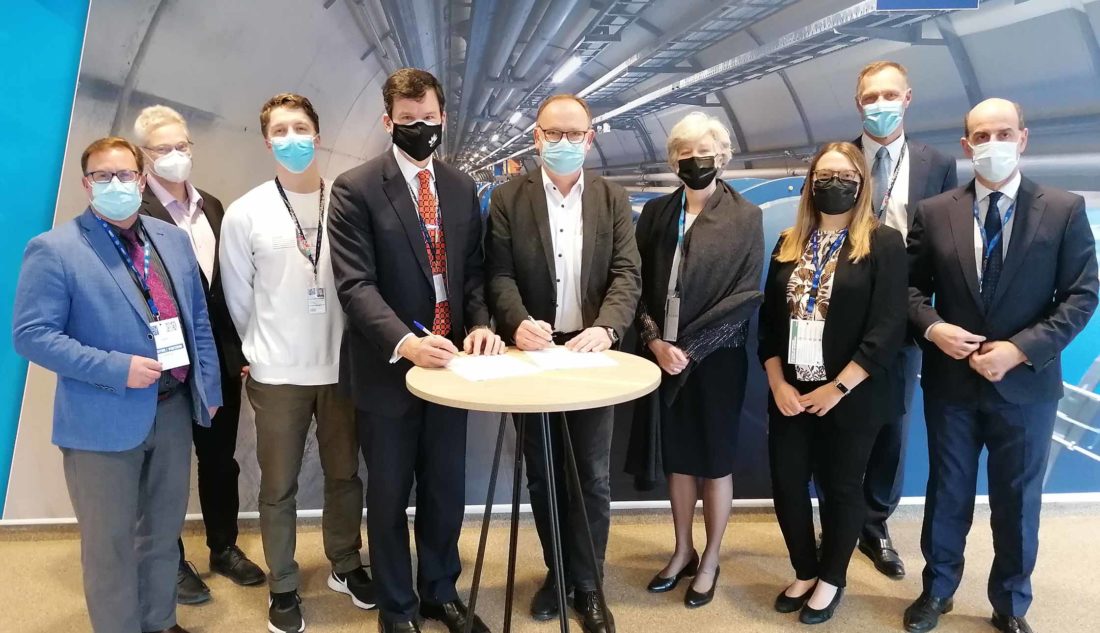
The University of Saskatchewan and Canadian Light Source research facility have signed a memorandum of understanding with CERN, the Geneva-based organization that hosts the Large Hadron Collider. The MOU marks the three organizations’ collaboration on the Future Circular Collider Feasibility Study.
While the Large Hadron Collider is currently the world’s largest and most powerful particle accelerator, the study will examine the technical and financial feasibility of a new, higher energy particle accelerator.
Mark Boland, PhD, machine director at CLS, says the MOU demonstrates how collaborative the international accelerator community is.
“The whole is greater than the sum of its parts,” Boland said. “You get that special thing where you come together, have a meeting of the minds and diversity in experience and ideas. So, hopefully, what will come out of this is a feasible design.”
The feasibility study was launched in 2021 by CERN, together with its international partners, in response to the recommendation of the European Strategy for Particle Physics to unite national institutes, laboratories and universities worldwide.
Patrick Hunchak, a master’s student at the U of S, completed a summer internship at CERN where he recently presented a workshop for other students who will be involved with the study.
“I got to meet people and work with them face-to-face and make connections that really benefit me, starting out in this field of science,” Hunchak said of his experience in Geneva. “It’s an opportunity to expand my international exposure and learn from other great scientists around the world.”
Boland, who is also an associate professor in the U of S department of physics and engineering physics, says the study is the next step in advancing the field of accelerator physics.
“We can all benefit from working and making each generation of accelerators better and better, but it just comes down to forming those relationships and solving problems together,” Boland said.
Researchers and students from Canada will be able to utilize the proposed collider at CERN, which will be 100 kilometres in circumference and cost more than $28 billion.
Hunchak believes that the higher energy capabilities of the proposed collider will speed up scientific discoveries and data collection.
“As an international project, a large community of science coming together, it’s a great opportunity for scientists of many areas to push the field further,” Hunchak said.
Boland explained the study and development of new research infrastructure at CERN can also be applied to advancing technology at the CLS.
“It’s all about working with people and achieving those common goals to increase our knowledge and understanding.”
Jakob Philipchuk | Staff Writer
Photo: @canlightsource via Instagram